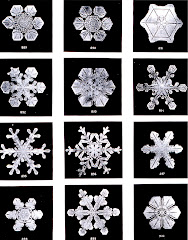Christy Rowe
Graphic nonfiction: A Look
Graphic nonfiction has always been the middle child of the comics world, lost on the bookstore shelves (or missing entirely) amid the rows of superhero novels and manga. Indeed, for most readers unfamiliar with the genre, comics is solely the purview of Superman, Wolverine, or perhaps Archie and Veronica. Even for those lovers of sequential art, fiction reigns supreme, with superhero or fantasy texts dominating.
But graphic nonfiction is hardly new, with its roots in the historical sequential texts of the past—Trajan’s Column, the Bayeux Tapestry, Borobudor, and narrative relief panels on temples in Egypt, Central America, and Greece. The desire to document history and peoples via pictures and words has been a part of comics and cartoons since the 19th century (and even earlier, if we include political cartoon broadsheets). And this subgenre includes more than just memoir, which makes up the great majority of nonfiction comics.[1]
Some of the earliest nonfiction graphic texts were educational in nature, what Josh Brown has called “pedagogical comics.” During comics’ so-called Golden Age (1930’s-early 1950’s), Will Eisner created teaching comics for the US Military, and many newspapers carried strips focused on events and people in US history (such as the Heroes of American History series). Today, not only are there many online sites encouraging the use of comics in education (such as the EduComics Project), there are graphic texts explaining philosophy, literary theory, and science (especially Icon Book’s “For Beginners” series). Larry Gonick’s wonderful Cartoon History of the Universe falls into this category, as does Mark Shultz’ Stuff of Life, a new graphic book on DNA and genetics designed to be used in the classroom. There are also graphic adaptations of all kinds of nonfiction texts, such as the US Constitution, Darwin’s Origin of Species, and the Bible. Finally there are the comics on comics that serve to explain how comics work using comic book format: Scott McCloud’s seminal Understanding Comics and Reinventing Comics from the 1990’s are the best examples. Oftentimes, however, these pedagogical textbooks sacrifice form to function; the artwork is utilitarian, the comics structure, simplistic. This is especially true of military or history texts/series, where the focus is on clearly explaining content, not really artistic (or literary) expression. Counter to such texts, Josh Brown points out that “American left historians and cartoonists” since the 1970’s have attempted to produce more analytical “comic-book histories of the United States,” using humor to critique elements of US history and politics and to note how the past still affects the present.
A newer subcategory of graphic nonfiction is graphic journalism. Joe Sacco’s award-winning books documenting struggles in Palestine and Bosnia show the visceral impact of war journalism told in graphic format, which influenced later artists/writers like David Axe, Matt Bors, and Ted Rall. The 9/11 attacks similarly inspired journalistic responses in the comics community, with Art Spiegelman’s In the Shadow of No Towers documenting a more personal response to the attacks and the political effects that followed, contrasting with Ernie Colon and Sid Jacobson’s more straightforward graphic adaptation of the 9/11 Report. And there has been a growing interest in tackling graphic biography, something embraced by publisher Hill and Wang (a division of Macmillan Books), who have issued biographies of Anne Frank, Che Guevara, Reagan, Stalin, and J. Edgar Hoover in recent years. Much graphic journalism tends to skew toward New Journalism, with its emphasis on the author’s experiences, feelings, and biases as much as on the experience/event documented. And with their blend of text and artwork, these texts can bring together the best of textual- and photo-journalism, even allowing for pictorial representations of memory (something Sacco explores to great effect in his books).
Travel writing is perhaps the smallest subcategory of graphic journalism, but has greatly expanded over the past 10 years; it, too, tends toward a New Journalistic focus on the individual over general travel tips, effectively othering the foreign person or landscape via both text and art. Guy Delisle is the best known artist in this mode, documenting with cartoonish artwork his absurd and humorous experiences as an animator abroad in North Korea, China, and Burma. Craig Thompson’s small but beautifully rendered Carnet de Voyage is the actual travel journal he kept on his Blankets promotional tour through Europe and North Africa, complete with pages of still lifes sketched and dated. And Josh Neufeld’s well-received graphic collection of far-flung travel experiences shows the interesting crossover appeal this genre might have for readers of textual travel writing, one of the most rapidly growing areas of publishing today.
Graphic memoir, however, remains the largest subgroup of nonfiction comics. The earliest true examples of this subgenre arise in the 1970’s: in the autobiographical elements of Eisner’s A Contract with God; and especially in the overtly personal comics of Justin Green and Harvey Pekar. This type of work reached its literary apex in Spiegelman’s Pulitzer Prize-winning Holocaust (auto)biographical narrative Maus, which started in the late 1970’s and finished in the early 1990’s. Since then, though there are many pure ‘coming of age’ stories, most current graphic memoirs tend to frame autobiography through a more thematic lens, exploring the effect of sexuality, gender, race, religion, or health/disease issues on one’s sense of self; the result of this is mini-categories of narrative even within this mode. Prominent graphic memoirists include Howard Cruse, David B., Phoebe Gloeckner, Alison Bechdel, Craig Thompson, and Lynda Barry (who describes her comics as “autobiofictionalography”), all of whom are notable for the poignancy of their memoirs as well as for the aptness of the concurrent artwork, such as in Bechdel’s panels based on childhood photographs, or in Barry’s stories of childhood drawn in her distinctive childlike style.
With such a long tradition within comics, why, then, is graphic nonfiction considered so niche? With the exception of political strips/cartoons in newspapers, why is most non-book-length graphic nonfiction all but invisible to the general public? Perhaps because much graphic nonfiction is still produced in smaller, independent pieces from artists/writers (and published only by smaller, less-known publishers). Occasionally, a collection of related pieces will be later compiled into one book, in the manner of a short story collection, though (aside from Maus or Persepolis) good luck finding such books at your local bookstore, even one with a decent comics section. Even those publishers that specialize in alternative or so-called artistic/literary comics (Image, Fantagraphics, Vertigo) usually don’t touch graphic nonfiction, let alone short nonfiction; Hill and Wang is one of the few exceptions.
This special feature for Reconfigurations thus hopes to counter this problem by giving a platform to several contemporary graphic artists and writers working in various subgenres of nonfiction.
The first piece, Caroline Picard’s The Wherecoyote, is her (re)interpretation of one of Joseph Beuys’ performance art pieces, dealing with war trauma and guilt. The second work, from well-known comics artist Howard Saunders, is his Axeman memoir, where Saunders’ alter-ego experiences key historical and cultural events from the 1960’s onward, using a collage-style of artwork (including photos, newspaper clippings, drawings, and handwritten text) ‘pasted’ on brown paper bags. Finally, Noble Dust, from writers Dave Myers and David Bowen and artist Jenna Allen, is the opening two scenes from their graphic text on late 19th century Russia and the role of youth in the coming Revolution.
We hope that this special feature both showcases the interesting work being done by up-and-coming and established comic artists, as well as introduces the joys of graphic nonfiction, with its many varieties, to a larger audience.
Recommended Works and Authors
Abel, Jessica and Matt Madden. Drawing Words and Writing Pictures. First Second, 2008.
Axe, David and Max Bors. War is Boring: Bored Stiff, Scared to Death in the World’s Worst War Zones. NAL Trade, 2010.
Barry, Lynda. One! Hundred! Demons! Sasquatch Books, 2005.
B[eauchard], David. Epileptic. Pantheon, 2006.
Bechdel, Alison. Fun Home: A Family Tragicomic. Mariner Books, 2007.
Brown, Joshua. “Comic Books in History: A Symposium.” Radical History Review 1984 (28-30): 229-252.
Crumb, Robert. The Book of Genesis. W.W. Norton, 2009.
Cruse, Howard. Stuck Rubber Baby. Paradox Press, 1995.
Delisle, Guy. Burma Chronicles. Drawn and Quarterly, 2008.
---. Pyongyang: A Journey in North Korea. Drawn and Quarterly, 2007.
---. Shenzhen: A Travelogue from China. Drawn and Quarterly, 2006.
Eisner, Will. Comics and Sequential Art. W.W. Norton, 2008.
---. A Contract with God. W.W. Norton, 2006.
---. The Plot: The Secret Story of the Protocols of the Elders of Zion. W.W. Norton, 2006.
Gloeckner, Phoebe. A Child’s Life and Other Stories. Frog Books, 2000.
Gonick, Larry. The Cartoon History of the Universe, I, II, and III. Books/Doubleday, 1994, 1997, 2002.
Main Street
---. The Cartoon History of the Modern World, I and II. Harper Paperbacks, 2006, 2009.
Jacobson, Sid and Ernie Colon. The 9/11 Report: A Graphic Adaptation. Hill and Wang 2006.
---. Anne Frank: The Anne Frank House Authorized Biography. Hill and Wang, 2010.
---. Che: A Graphic Biography. Hill and Wang, 2009.
McCloud, Scott. Reinventing Comics: How Imagination and Technology are Revolutionizing an Art Form. Harper Paperbacks, 2000.
---. Understanding Comics: The Invisible Art. Harper Paperbacks 1994.
Neufeld, Josh. AD: New Orleans After the Deluge. Pantheon, 2010.
---. A Few Perfect Hours and Other Stories from Southeast Asia and Central Europe. Alternative Comics, 2004.
Pekar, Harvey, Joyce Brabner, and Frank Stack. Our Cancer Year. Running Press, 1994.
Sacco, Joe. Palestine. Fantagraphics, 2002.
---. Safe Area Gorazde: The War in Eastern Bosnia, 1992-1995. Fantagraphics, 2002.
Satrapi, Marjane. The Complete Persepolis. Pantheon, 2007.
Schultz, Mark, Zander Cannon, and Kevin Cannon. Stuff of Life: A Graphic Guide to Genetics and DNA. Hill and Wang, 2009.
Spiegelman, Art. In the Shadow of No Towers. Viking, 2004.
---. Maus: A Survivor’s Tale, I and II. Pantheon, 1986, 1992.
Thompson, Craig. Blankets. Top Shelf Production, 2003.
---. Carnet de Voyage. Top Shelf Productions, 2004.
_____
Note:
[1] For the context of this essay, the focus will be on North American and European comics, though manga also has a tradition of nonfiction (especially historical) comics. _____
Christy Rowe is a Humanities Lecturer at the University of Denver. Her areas of interest include poetry and poetics, science fiction and fantastic literature, and travel writing/theory. Christy’s publications include poetry/fiction in McSweeney’s, The Denver Quarterly, and Salt Hill; and essays in The Journal of Imagism and Mama, PhD: Women Write About Motherhood and Academic Life (Rutgers UP). _____














